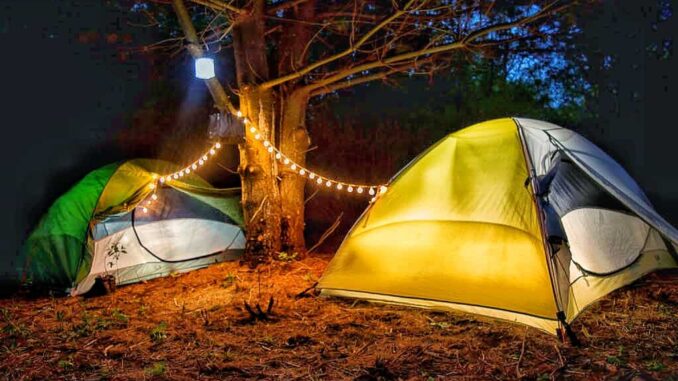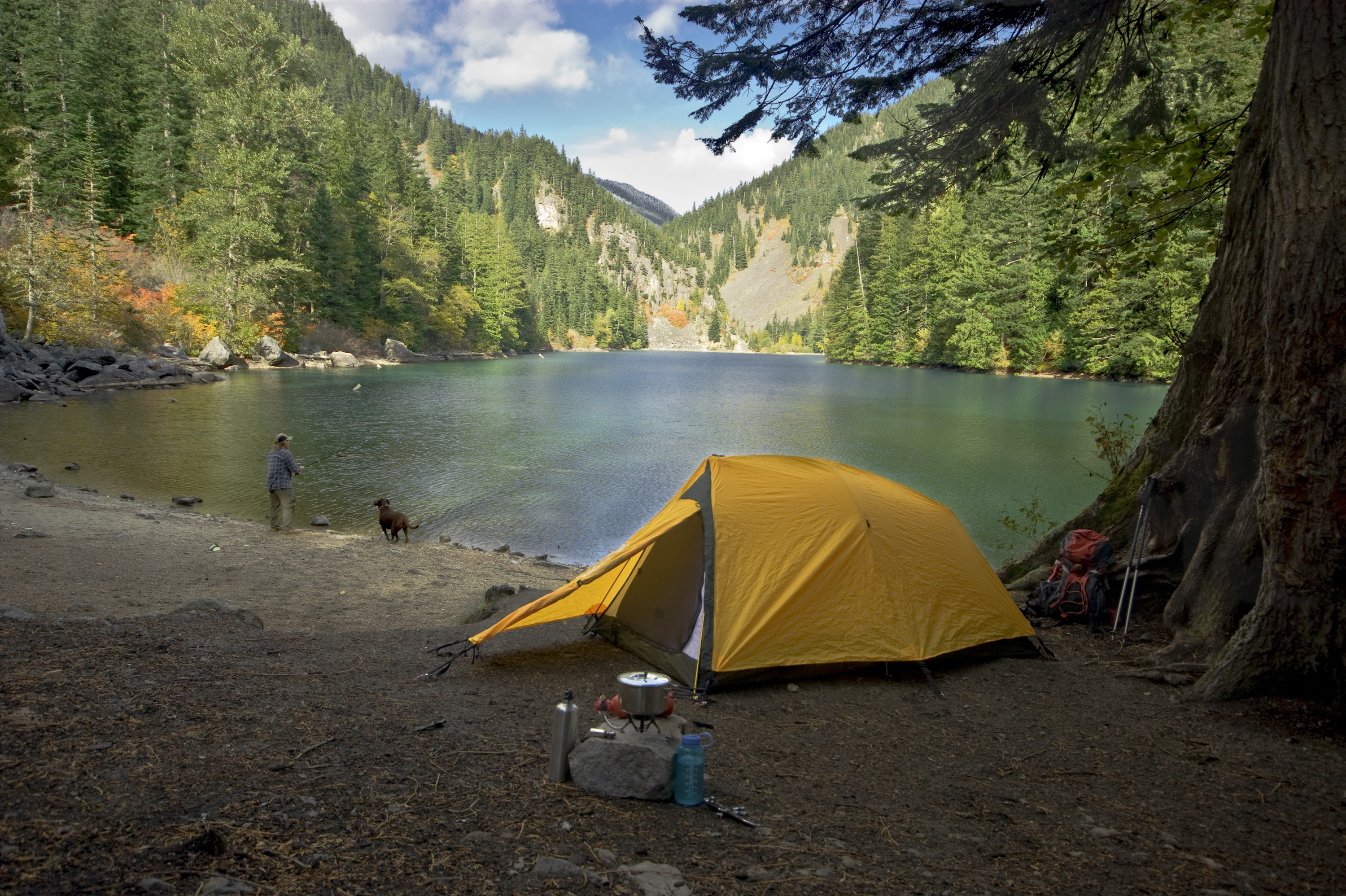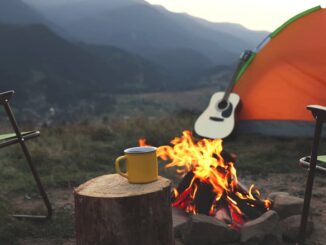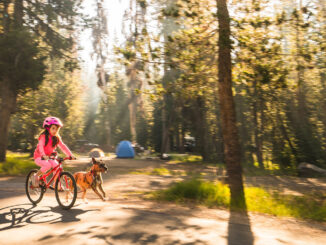
There’s a certain kind of magic in Oregon that unfolds when the air turns crisp, the mist lingers until noon, and the crackle of a campfire becomes the heartbeat of camp life. Cozy camping is the art of being present and in the moment with every crackle of the fire, every note of rain on the tarp, and every quiet second before dawn. It’s about leaning into autumn’s quieter rhythm, layering up, and discovering that Oregon’s forests, rivers, and mountains might be at their most beautiful when the crowds are gone.
With a few smart choices, the right gear, and a sense of adventure, you can turn frosty mornings, damp gear, and early bedtimes into some of your favorite outdoor memories.
The Sweet Spot: Fall Camping Season in Oregon
Late September through mid-November is the perfect window for “cozy camping.” Daytime highs hover in the 50s or 60s, while nights start creeping into freezing temperatures that are ideal for firepits, thick socks, and hot drinks under the stars. Many campgrounds remain open deep into fall, typically with fewer neighbors and more solitude.
Here are a few scenic spots where you can still pitch a tent, park your van, or shoulder a pack when the temperatures drop:
- Metolius Preserve (near Sisters) – A hidden gem managed by the Deschutes Land Trust, offering serene trails, golden larches, and quiet riverside nooks perfect for low-impact camping or day hiking.
- Rogue River Corridor – Backpack along the Rogue River Trail (40 miles one-way) through mossy forests and canyon walls that glow at sunset. Great for shoulder-season trips with mild coastal influence.
- Deschutes National Forest – Explore campgrounds like Elk Lake or Paulina Lake, both with breathtaking alpine views. Expect brisk mornings and the occasional dusting of snow by late October.
- Silver Falls State Park – With year-round camping and 10 stunning waterfalls, it’s Oregon’s cozy-camping classic. Less crowded after Labor Day and spectacular in autumn mist.
- Oxbow Regional Park – Close to home but surrounded by wilderness. Ideal for quick weekend escapes before true winter hits.
- Crane Prairie Reservoir & Waldo Lake – Accessible into mid-fall; great for kayakers and anglers who don’t mind early morning frost on the water.
- Cape Lookout State Park – A coastal favorite where you can listen to the rain pattering on your tent while waves crash just beyond the trees. Fewer crowds means more cozy.
Gear Up for Warmth and Comfort
Cozy camping starts before you even hit the trail. The right gear makes the difference between “chilly and damp” and “snug and content.”
- Layering is your best friend. Start with a moisture-wicking base of merino wool or synthetic, add an insulating mid-layer of fleece or down, and finish with a waterproof shell.
- Bring an insulated sleeping pad as ground cold can sap heat faster than air temperatures.
- Use a sleeping bag rated at least 10°F colder than expected lows. Add a fleece liner for extra warmth.
- Keep your feet and hands happy. Wool socks, mittens, and a beanie can turn a cold night cozy.
- Dry firewood and waterproof matches are musts. Many campgrounds sell bundles, but bring your own just in case.
- A tarp or footprint under your tent prevents moisture from seeping up when the ground freezes.
- Lighting sets the mood. A string of battery powered fairy lights or a lantern on low can make your camp feel like home.
Fighting the Damp: Keep Gear Dry and Spirits High
In Oregon’s fall climate, moisture management is everything. Even the best tent can’t save you from soggy socks and smoky kindling if you’re not prepared.
- Set up camp early to scout high and well-drained ground before dark.
- Air-dry gear in the morning when the sun peeks out. Pack a micro-towel for quick wipes.
- Store clothes and electronics inside dry bags or waterproof stuff sacks.
- Use your rainfly even if it’s not raining. Overnight condensation can be worse than drizzle.
- Hang wet gear near the fire (but not too close as sparks happen). Rotate often for even drying.
How to Build the Perfect Fall Campfire
A good fire is more than heat, it’s heart. Here’s how to master it when conditions are cold or damp:
- Check local fire restrictions. Many Oregon parks allow campfires in established rings even in autumn, but always confirm before lighting up.
- Find dry fuel. Pack your own firewood or purchase locally to prevent spreading tree pests. Pine needles and birch bark make great natural tinder.
- Build a foundation. Start with a small “teepee” of kindling or the classic log-cabin stack. Leave space for airflow.
- Light efficiently. Use waterproof matches or a magnesium striker. Once your flame catches, feed it gradually.
- Maintain the magic. Add logs slowly, rotate to keep embers alive, and keep water or sand nearby for safety.
- Leave no trace. When you break camp, drown embers completely, stir, and feel for heat before leaving.
A steady fire transforms the experience as you enjoy the pop of resin, the scent of smoke, and the warmth radiating against the chill. It’s where great camping memories form.
Campfire Comforts and Hearty Meals
A warm meal by the fire is the essence of cozy camping. Go beyond granola bars by embracing fall flavors that warm from the inside out with these ideas:
- Dutch-oven chili or campfire stew simmered low and slow provides a hearty dinner.
- Grilled cheese on the camp stove dunked into steaming tomato bisque results in instant and warming comfort.
- Foil pack potatoes and veggies with olive oil, salt, and rosemary and set in the coals for about 20 minutes until tender.
- Hot apple cider or cocoa with cinnamon sticks or mulling spices will make your whole campsite smell like October.
- Make caramel apple slices with apple slices drizzled with caramel and dusted with cinnamon sugar. Wrap in foil and warm by the fire until tender.
If campfires are restricted, use a propane stove or backpacking burner. Many scenic sites, like the McKenzie Pass and Mt. Hood National Forest, have designated cooking areas even in the fall.
Backpacking Options for Shoulder Season
Fall backpacking offers crisp air, golden light, and fewer mosquitoes. Some top shoulder season routes include:
- Opal Creek Wilderness (Santiam Canyon) – Dense old-growth, emerald pools, and waterfalls; day-use or dispersed camping only.
- Rogue River Trail – A moderate, scenic trek perfect for multi-day backpacking before winter storms.
- Mount Jefferson Wilderness – The Jefferson Lake Trail and Whitewater Trail remain accessible into October.
- Ochoco Mountains & Big Summit Prairie – Wide-open landscapes with fall color and solitude ideal for late-season hikers.
Check Oregon State Parks, USFS, or Recreation.gov for updates before heading out as snow and closures can change quickly after the first frost.
Morning Magic and Mindful Moments
There’s nothing quite like waking up to frost-tipped ferns and seeing your breath in the morning air. Brew tea or coffee, wrap yourself in a blanket, and watch sunlight melt ice crystals from pine needles.
Cozy camping isn’t about luxury but about connection. It’s about finding contentment in contrast with the warmth of flame against the cold of dawn, the silence of the woods against the pop of burning pine, and the stillness that lingers after the last ember fades.
Leave your campsite better than you found it, pack out all waste, and remember that part of the art of cozy camping is respecting the rhythm of the forest itself.
Final Thoughts
When the season turns and the first snow dusts the Cascades, Oregon’s outdoors belong to the brave and the mindful. Cozy camping is how we bridge summer’s freedom with winter’s stillness. It’s how we slow down, breathe deeper, and rediscover what drew us outside in the first place.
So this fall, pack your blanket, your thermos, a snuggly flannel, and your patience. Find a spot where the firelight glows, the frost glimmers, and the wild feels welcoming again. That’s the art of cozy camping.



